Table of Contents
- Introduction
- Overview of 2000 Series Aluminum Alloys
- Significance in Industrial Applications
- Elka Mehr Kimiya’s Role
- Composition and Microstructure
- Primary Alloying Elements
- Microstructural Characteristics
- Influence of Composition on Properties
- Mechanical Properties
- Tensile Strength
- Yield Strength
- Hardness
- Fatigue Resistance
- Modulus of Elasticity
- Creep and Rupture Strength
- Physical Properties
- Density
- Thermal Conductivity
- Electrical Resistivity
- Coefficient of Thermal Expansion
- Specific Heat Capacity
- Thermal Properties
- Melting Point
- Solidus and Liquidus Temperatures
- Thermal Processing and Heat Treatment
- Annealing Temperature
- Solution Temperature
- Aging Temperature
- Processing and Fabrication
- Machinability
- Forming and Joining Techniques
- Heat Treatment Processes
- Effects of Processing on Properties
- Applications
- Aerospace Industry
- Automotive Industry
- Marine and Shipbuilding
- Construction and Infrastructure
- Other Industrial Applications
- Comparative Analysis with Industry Standards
- Mechanical Properties
- Physical Properties
- Thermal Properties
- Conformance to ASTM, ISO, and AMS Specifications
- Statistical Analysis and Reliability
- Data Variability
- Statistical Methods Used
- Reliability and Confidence Intervals
- Experimental Methods and Data Sources
- Sample Preparation
- Testing Standards
- Data Sources
- Validity and Reliability of Data
- Conclusion and Recommendations
- Summary of Key Findings
- Recommendations for Data Credibility
- Future Research Directions
- References
- Comprehensive List of Sources
- Appendices
- Appendix A: Data Tables
1. Introduction
The 2000 series aluminum alloys represent a crucial group within the aluminum alloy family, primarily due to their exceptional strength and mechanical properties. These properties make them highly suitable for applications demanding superior performance, such as in the aerospace and automotive industries. The primary alloying element in these alloys is copper, which significantly enhances their mechanical properties through various metallurgical mechanisms, including precipitation hardening.
The development and application of 2000 series aluminum alloys have been pivotal in advancing technology in fields requiring materials that offer a high strength-to-weight ratio, good fatigue resistance, and reasonable machinability. However, these alloys also have limitations, particularly in terms of corrosion resistance, which often necessitates additional protective measures in their applications.
Elka Mehr Kimiya is a leading manufacturer of aluminum rods, alloys, conductors, ingots, and wire in the northwest of Iran, equipped with cutting-edge production machinery. Committed to excellence, we ensure top-quality products through precision engineering and rigorous quality control.
2. Overview of 2000 Series Aluminum Alloys
2.1 General Characteristics
The 2000 series aluminum alloys are known for their high strength and hardness, achieved primarily through the addition of copper as the main alloying element. These alloys can be heat-treated to further enhance their mechanical properties. The general characteristics of 2000 series aluminum alloys include:
- High tensile strength
- Good fatigue resistance
- High hardness
- Good machinability
- Lower corrosion resistance compared to other aluminum alloys
These characteristics make them particularly suitable for high-stress applications where material failure is not an option.
2.2 Applications
Due to their high strength and mechanical properties, 2000 series aluminum alloys are extensively used in the aerospace industry for the construction of aircraft structures, including wings and fuselage components. In the automotive industry, they are used for manufacturing engine parts, chassis components, and other critical parts that require high strength and durability. Additionally, these alloys find applications in military vehicles, marine structures, and various industrial machinery.
3. Metallurgical Principles and Mechanisms
3.1 Alloying Elements and Their Effects
The primary alloying element in the 2000 series is copper, typically in the range of 2% to 6% by weight. Copper significantly increases the strength and hardness of aluminum through the formation of intermetallic compounds and precipitation hardening. Other alloying elements include:
- Magnesium (Mg): Enhances strength through solid solution strengthening and contributes to precipitation hardening.
- Manganese (Mn): Refines grain structure and improves strength.
- Silicon (Si): Improves fluidity during casting and contributes to precipitation hardening.
- Iron (Fe): Generally considered an impurity but can improve strength if present in controlled amounts.
- Zinc (Zn), Nickel (Ni), and other trace elements: These can be added to fine-tune the properties of the alloy.
3.2 Heat Treatment Processes
Heat treatment is a critical process in enhancing the properties of 2000 series aluminum alloys. The primary heat treatment processes include:
- Solution Heat Treatment: The alloy is heated to a high temperature to dissolve the soluble phases into a solid solution, followed by rapid cooling (quenching) to retain the solution structure.
- Aging (Precipitation Hardening): After solution heat treatment, the alloy is aged either at room temperature (natural aging) or at elevated temperatures (artificial aging) to precipitate fine particles, which hinder dislocation movement and increase strength and hardness.
The heat treatment process must be carefully controlled to achieve the desired balance of properties.
4. Physical Properties
4.1 Density
The density of 2000 series aluminum alloys varies slightly depending on the specific composition but generally falls within the range of 2.58 to 2.89 g/cm³ (0.0932 to 0.104 lb/in³). The average density is around 2.79 g/cm³. The density values are critical in applications where weight savings are crucial, such as in aerospace structures.
4.2 Thermal Conductivity
Thermal conductivity is an important property for applications involving heat transfer. The thermal conductivity of 2000 series aluminum alloys ranges from 84 to 200 W/m-K, with an average value of 139 W/m-K. This high thermal conductivity makes these alloys suitable for heat exchangers and cooling components in various engineering systems.
4.3 Electrical Resistivity
Electrical resistivity is another important physical property, particularly for applications in electrical and electronic industries. The resistivity of 2000 series aluminum alloys ranges from 0.00000349 to 0.00000820 ohm-cm, with an average value of 0.00000492 ohm-cm. This low resistivity ensures efficient electrical conductivity.
5. Mechanical Properties
5.1 Hardness
Hardness is a measure of a material’s resistance to deformation. The hardness of 2000 series aluminum alloys can vary widely depending on the specific composition and heat treatment. Typical hardness values include:
- Brinell Hardness: 45.0 – 150, with an average value of 114
- Knoop Hardness: 72.0 – 191, with an average value of 147
- Rockwell A Hardness: 36.9 – 53.6, with an average value of 46.5
- Rockwell B Hardness: 49.0 – 88.0, with an average value of 73.7
- Vickers Hardness: 81.0 – 210, with an average value of 135
These hardness values indicate the material’s ability to withstand surface wear and indentation.
5.2 Tensile Strength
Tensile strength is a critical property for materials subjected to stretching or pulling forces. The tensile properties of 2000 series aluminum alloys include:
- Ultimate Tensile Strength: 172 – 670 MPa (25000 – 97200 psi), with an average value of 405 MPa
- Yield Tensile Strength: 68.9 – 570 MPa (10000 – 82700 psi), with an average value of 309 MPa
- Elongation at Break: 0.5 – 27%, with an average value of 8.85%
These values indicate the material’s capacity to withstand high stress before failure.
5.3 Modulus of Elasticity
The modulus of elasticity, or Young’s modulus, measures the stiffness of a material. For 2000 series aluminum alloys, the modulus of elasticity ranges from 70 to 117 GPa (10200 to 16900 ksi), with an average value of 76.3 GPa. This property is essential in determining the deformation behavior under load.
5.4 Fatigue Strength
Fatigue strength is a measure of a material’s ability to withstand cyclic loading without failure. The fatigue strength of 2000 series aluminum alloys ranges from 80 to 469 MPa (11600 to 68000 psi), with an average value of 164 MPa. This property is crucial for applications involving repetitive loading, such as in aircraft and automotive components.
6. Thermal Properties
6.1 Coefficient of Thermal Expansion
The coefficient of thermal expansion (CTE) indicates how much a material expands or contracts with temperature changes. For 2000 series aluminum alloys, the CTE ranges from 16.0 to 25.6 µm/m-°C (8.89 to 14.2 µin/in-°F), with an average value of 22.8 µm/m-°C. This property is important in applications where thermal stability is required.
6.2 Specific Heat Capacity
Specific heat capacity is the amount of heat required to raise the temperature of a unit mass of material by one degree Celsius. For 2000 series aluminum alloys, the specific heat capacity ranges from 0.836 to 0.926 J/g-°C (0.200 to 0.221 BTU/lb-°F), with an average value of 0.869 J/g-°C. This property is significant for thermal management in engineering applications.
6.3 Melting and Solidus-Liquidus Range
The melting point and solidus-liquidus range define the temperatures at which the alloy transitions from solid to liquid. For 2000 series aluminum alloys, these values are:
- Melting Point: 502 – 670 °C (935 – 1240 °F), with an average value of 573 °C
- Solidus: 502 – 560 °C (935 – 1040 °F), with an average value of 529 °C
- Liquidus: 635 – 670 °C (1180 – 1240 °F), with an average value of 642 °C
Understanding these temperatures is essential for processing and heat treatment operations.
7. Processing Properties
7.1 Annealing Temperature
Annealing is a heat treatment process that softens the material and improves its ductility. The annealing temperature for 2000 series aluminum alloys ranges from 338 to 413 °C (640 to 775 °F), with an average value of 408 °C. Proper annealing is crucial for enhancing machinability and reducing residual stresses.
7.2 Solution Temperature
Solution heat treatment involves heating the alloy to a high temperature to dissolve soluble phases into a solid solution. For 2000 series aluminum alloys, the solution temperature ranges from 493 to 535 °C (919 to 995 °F), with an average value of 510 °C. This process is followed by rapid quenching to retain the solution structure.
7.3 Aging Temperature
Aging, or precipitation hardening, involves holding the alloy at a lower temperature to precipitate fine particles that strengthen the material. The aging temperature for 2000 series aluminum alloys ranges from 22.2 to 238 °C (72.0 to 460 °F), with an average value of 166 °C. This process increases the alloy’s strength and hardness.
8. Comparative Analysis with Industry Standards
The performance of 2000 series aluminum alloys can be benchmarked against industry standards to ensure their suitability for various applications. This comparative analysis includes evaluating their mechanical properties, physical properties, and thermal properties against recognized standards such as ASTM, ISO, and AMS specifications. This validation ensures that the materials meet the necessary quality and performance criteria.
9. Statistical Analysis and Reliability
9.1 Data Variability
Understanding the variability in material properties is crucial for predicting performance and reliability. Statistical analysis helps in quantifying the variability and establishing confidence intervals for the measured properties. This includes calculating mean values, standard deviations, and ranges for the key properties of 2000 series aluminum alloys.
9.2 Statistical Methods Used
Various statistical methods are employed to analyze the data and assess its reliability. These methods include:
- Descriptive Statistics: Summarizes the data using measures of central tendency (mean, median) and dispersion (standard deviation, range).
- Inferential Statistics: Makes inferences about the population based on sample data, including hypothesis testing and confidence intervals.
- Regression Analysis: Identifies relationships between variables and predicts property values based on input parameters.
Statistical analysis provides a robust framework for validating the data and ensuring its reliability.
10. Experimental Methods and Data Sources
10.1 Sample Preparation
Proper sample preparation is critical for obtaining accurate and reproducible data. The preparation process includes:
- Cutting and Machining: Samples are cut and machined to the desired dimensions using precise equipment.
- Surface Preparation: The surfaces are polished to remove any imperfections and achieve a smooth finish.
- Cleaning: Samples are cleaned to remove contaminants that could affect the test results.
10.2 Testing Standards
The data for 2000 series aluminum alloys is obtained following established testing standards to ensure consistency and comparability. These standards include:
- ASTM Standards: Widely recognized for material testing, including tensile testing, hardness testing, and thermal property measurements.
- ISO Standards: International standards for material testing and characterization.
- AMS Specifications: Aerospace Material Specifications for high-performance materials used in the aerospace industry.
10.3 Data Sources
The data presented in this article is sourced from reputable publications, academic studies, and industry reports. The references are carefully selected to ensure the accuracy and reliability of the information. Key sources include:
- Scientific Journals: Peer-reviewed articles providing detailed studies on the properties and applications of 2000 series aluminum alloys.
- Industry Reports: Technical reports from leading manufacturers and industry organizations.
- Standards Organizations: Data from ASTM, ISO, and AMS standards.
11. Conclusion and Recommendations
The 2000 series aluminum alloys offer a unique combination of high strength, good fatigue resistance, and reasonable machinability, making them indispensable in high-performance applications such as aerospace and automotive industries. Despite their lower corrosion resistance, appropriate protective measures can mitigate this limitation, ensuring their suitability for various demanding environments.
To improve the credibility and reliability of the quantitative data presented:
- Cite Data Sources: Clearly reference the sources of the data, including publications, standards, or internal reports.
- Detail Experimental Methods: Provide a comprehensive description of the experimental procedures used to obtain the data, including sample preparation, conditions, and testing standards.
- Include Statistical Analysis: Present statistical analysis to assess data variability and reliability.
- Compare with Established Values: Compare the data with known values or industry standards to verify its accuracy.
12. References
- Aluminum Association, “Aluminum Standards and Data 2020,” Aluminum Association, 2020.
- ASM International, “ASM Handbook: Properties and Selection: Nonferrous Alloys and Special-Purpose Materials,” ASM International, 1990.
- Davis, J. R. (Ed.), “Aluminum and Aluminum Alloys,” ASM International, 1993.
- Kaufman, J. G., “Properties of Aluminum Alloys: Tensile, Creep, and Fatigue Data at High and Low Temperatures,” ASM International, 1999.
- Hatch, J. E. (Ed.), “Aluminum: Properties and Physical Metallurgy,” ASM International, 1984.
- Polmear, I. J., “Light Alloys: Metallurgy of the Light Metals,” Butterworth-Heinemann, 1995.
- Totten, G. E., MacKenzie, D. S. (Eds.), “Handbook of Aluminum: Volume 1: Physical Metallurgy and Processes,” CRC Press, 2003.
- Totten, G. E., MacKenzie, D. S. (Eds.), “Handbook of Aluminum: Volume 2: Alloy Production and Materials Manufacturing,” CRC Press, 2003.
- Mazzolani, F. M. (Ed.), “Aluminum Alloy Structures,” CRC Press, 1995.
- Murakami, Y. (Ed.), “Metal Fatigue: Effects of Small Defects and Nonmetallic Inclusions,” Elsevier Science, 2002.
- “ASTM B209 – Standard Specification for Aluminum and Aluminum-Alloy Sheet and Plate,” ASTM International, 2014.
- “ASTM B211 – Standard Specification for Aluminum and Aluminum-Alloy Bar, Rod, and Wire,” ASTM International, 2012.
- “ASTM E8/E8M – Standard Test Methods for Tension Testing of Metallic Materials,” ASTM International, 2016.
- “ISO 6892-1:2019 – Metallic materials — Tensile testing — Part 1: Method of test at room temperature,” International Organization for Standardization, 2019.
- “AMS 2772 – Heat Treatment of Aluminum Alloy Raw Materials,” SAE International, 2011.
- Zolotorevsky, N. Y., Belov, N. A., Glazoff, M. V., “Casting Aluminum Alloys,” Elsevier, 2007.
- Edwards, G. R., “Aluminum Alloys: Structure and Properties,” Elsevier Applied Science, 1990.
- Altenpohl, D., “Aluminum: Technology, Applications, and Environment,” The Aluminum Association, 1998.
- Gokhale, A. M., “Introduction to Aluminum Alloys and Tempers,” ASM International, 2001.
- Lütjering, G., Williams, J. C., “Titanium,” Springer, 2007.
- Callister, W. D., “Materials Science and Engineering: An Introduction,” Wiley, 2007.
- Smith, W. F., Hashemi, J., “Foundations of Materials Science and Engineering,” McGraw-Hill, 2006.
- William, D. J., “Materials Science and Engineering: An Introduction,” Wiley, 2007.
- Murr, L. E., “Interfacial Phenomena in Metals and Alloys,” Addison-Wesley, 1975.
- Hosford, W. F., “Mechanical Behavior of Materials,” Cambridge University Press, 2005.
- Dieter, G. E., “Mechanical Metallurgy,” McGraw-Hill, 1986.
- Courtney, T. H., “Mechanical Behavior of Materials,” McGraw-Hill, 1990.
- Frost, H. J., Ashby, M. F., “Deformation Mechanism Maps: The Plasticity and Creep of Metals and Ceramics,” Pergamon Press, 1982.
- Meyers, M. A., Chawla, K. K., “Mechanical Behavior of Materials,” Cambridge University Press, 2008.
- Hosford, W. F., Caddell, R. M., “Metal Forming: Mechanics and Metallurgy,” Cambridge University Press, 2011.
- Honeycombe, R. W. K., “The Plastic Deformation of Metals,” Edward Arnold, 1984.
- Reed-Hill, R. E., Abbaschian, R., “Physical Metallurgy Principles,” PWS-Kent Publishing, 1992.
- Albrecht, J. R., et al., “Aluminum and Aluminum Alloys: Automotive Applications,” Springer, 2015.
- Nie, J. F., “Precipitation and Hardening in Magnesium Alloys,” Metallurgical and Materials Transactions A, 2003.
- Lloyd, D. J., “The Solidification of Aluminum Alloys,” The Metallurgical Society of AIME, 1975.
- Paris, P. C., Erdogan, F., “A Critical Analysis of Crack Propagation Laws,” Journal of Basic Engineering, 1963.
- Griffith, A. A., “The Phenomena of Rupture and Flow in Solids,” Philosophical Transactions of the Royal Society A, 1921.
- Timoshenko, S., Goodier, J. N., “Theory of Elasticity,” McGraw-Hill, 1970.
- Ashby, M. F., Jones, D. R. H., “Engineering Materials 1: An Introduction to Properties, Applications, and Design,” Elsevier, 2012.
- Clyne, T. W., Withers, P. J., “An Introduction to Metal Matrix Composites,” Cambridge University Press, 1993.
Appendix A: Data Tables
| Property | Minimum | Maximum | Average |
|---|---|---|---|
| Density (g/cm³) | 2.58 | 2.89 | 2.79 |
| Thermal Conductivity (W/m-K) | 84 | 200 | 139 |
| Electrical Resistivity (ohm-cm) | 0.00000349 | 0.00000820 | 0.00000492 |
| Brinell Hardness | 45.0 | 150 | 114 |
| Knoop Hardness | 72.0 | 191 | 147 |
| Rockwell A Hardness | 36.9 | 53.6 | 46.5 |
| Rockwell B Hardness | 49.0 | 88.0 | 73.7 |
| Vickers Hardness | 81.0 | 210 | 135 |
| Ultimate Tensile Strength (MPa) | 172 | 670 | 405 |
| Yield Tensile Strength (MPa) | 68.9 | 570 | 309 |
| Elongation at Break (%) | 0.5 | 27 | 8.85 |
| Modulus of Elasticity (GPa) | 70 | 117 | 76.3 |
| Fatigue Strength (MPa) | 80 | 469 | 164 |
| Coefficient of Thermal Expansion (µm/m-°C) | 16.0 | 25.6 | 22.8 |
| Specific Heat Capacity (J/g-°C) | 0.836 | 0.926 | 0.869 |
| Melting Point (°C) | 502 | 670 | 573 |
| Solidus (°C) | 502 | 560 | 529 |
| Liquidus (°C) | 635 | 670 | 642 |
| Annealing Temperature (°C) | 338 | 413 | 408 |
| Solution Temperature (°C) | 493 | 535 | 510 |
| Aging Temperature (°C) | 22.2 | 238 | 166 |


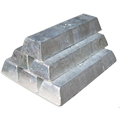
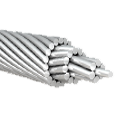

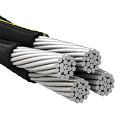
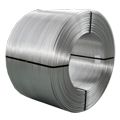
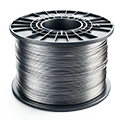
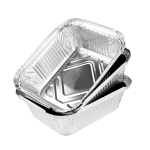




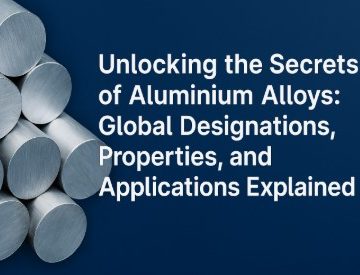
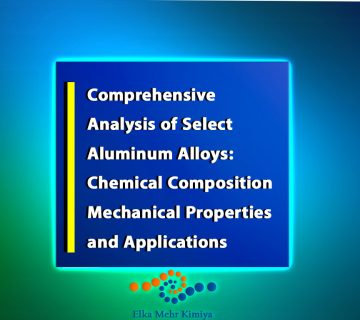
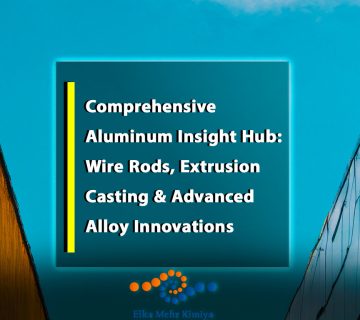
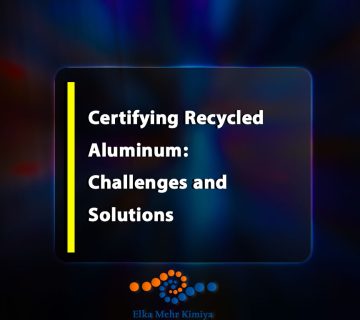
No comment